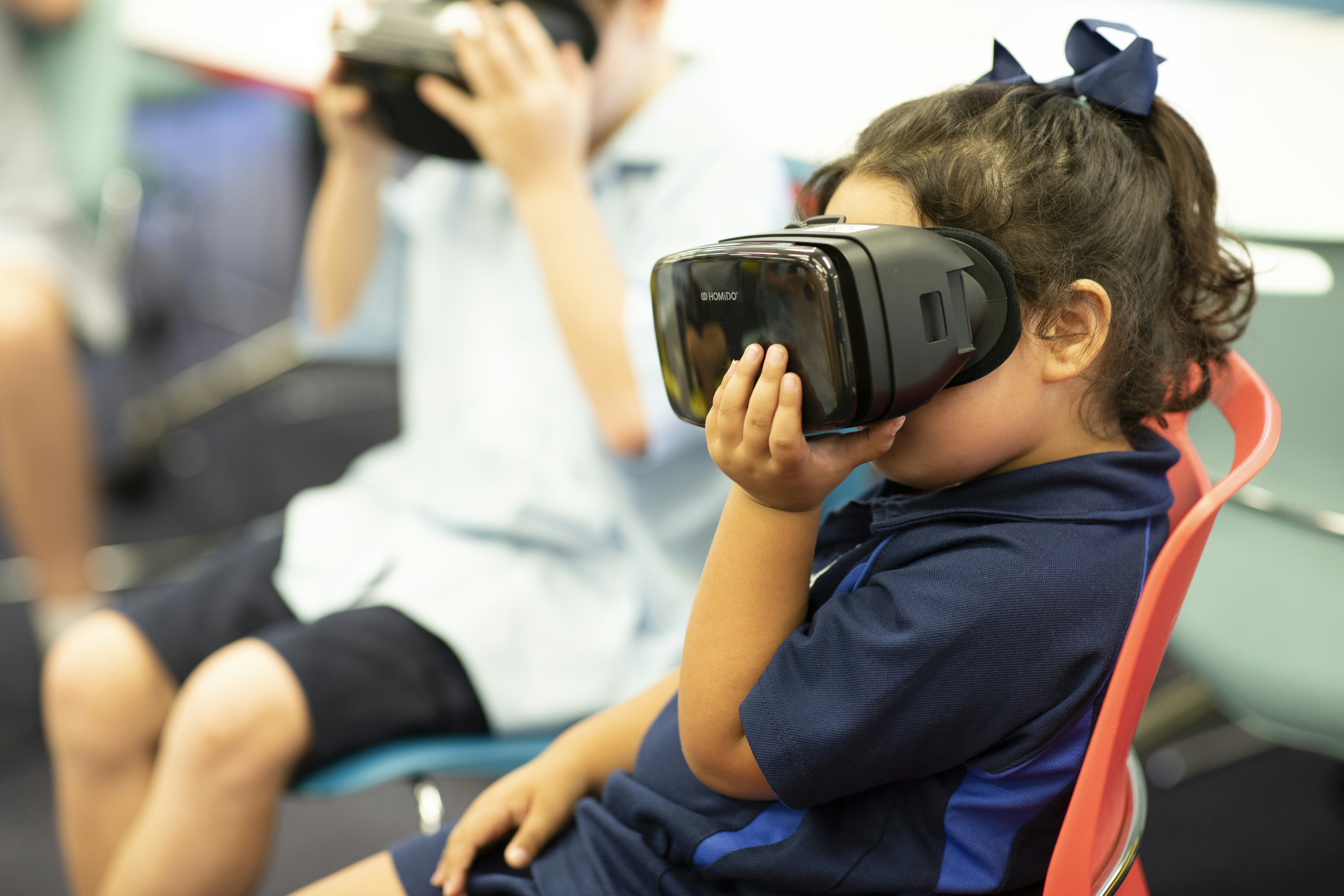Unleash AI Storytelling for Personalized Online Learning Paths
In the ever-evolving world of education, blending creativity with technology has never been more crucial. As we delve into 2025, artificial intelligence (AI) continues to shape how we interact with learning materials, particularly through storytelling. Picture this: you’re navigating an online course tailored just for you, where every narrative moment resonates with your interests and learning pace. This blend of AI-generated storytelling and personalized learning is transforming online education from a passive consumption experience into an engaging and dynamic journey.
Imagine yourself as the adventurer guiding your own educational quest, where vibrant stories not only enhance your understanding but also keep you motivated and engaged. This article explores how AI-generated storytelling can curate personalized learning journeys, fostering an engaging and effective online educational experience.
The Science Behind AI-Generated Storytelling
AI-generated storytelling is not merely a gimmick; it stands on the foundation of complex algorithms and natural language processing technologies. By analyzing vast amounts of data from various learner interactions, these systems can create narratives that feel personal and relevant to each student. Research from Stanford highlights that storytelling significantly enhances information retention. Additionally, as we learn through narrative, our brains process information more deeply, increasing our understanding and engagement (source: Stanford Research).
But how does this apply practically in online learning? Imagine walking through historical events through a personalized narrative that feels curated to your preferences, resulting in an experience far richer than traditional content formats. With AI, courses can adjust their storytelling to reflect your past interactions and preferences, making every lesson feel uniquely yours.
Crafting Tailored Learning Experiences
One of AI's most significant contributions to education lies in its ability to assess individual learning styles. As highlighted in the article on personalized pathways, AI can adapt tutorials, quizzes, and even storytelling elements in courses based on real-time feedback and assessments.
For instance, a learner struggling with math might be introduced to a character struggling with similar challenges in an educational narrative, demonstrating perseverance and problem-solving strategies. This kind of tailored storytelling keeps learners engaged, making them feel understood and supported, fostering an emotional connection to the material.
The Mechanics of Personalized Storytelling
To implement AI-generated storytelling effectively, online educators must focus on several key components:
1. Learner Profiles
The first step involves creating detailed learner profiles. These profiles should encompass interests, previous experience, preferred learning styles, and emotional responses to various educational contexts. The richer the data collected, the more compelling the story can be crafted.
2. Story Evolution
Once a narrative framework is established, storytelling can be made dynamic. Each learner’s journey needs the capacity to change based on their interactions. Techniques like branching narratives should be introduced, where decisions impact the flow of lessons, closely resembling how games operate. This encourages active participation, as learners are less likely to disengage when they see the consequences of their choices.
3. Feedback Mechanisms
A fundamental element is the integration of feedback loops that inform the AI on how to adjust narratives and learning paths. Regular assessments and engagement metrics are vital to ensure that the storytelling continues to foster understanding and retention.
4. Emotional Engagement
Using AI to develop emotionally resonant characters and scenarios can heighten learner engagement. When students see themselves reflected in a story, they are more likely to persist through challenges. AI can analyze mood and engagement data to determine when the narrative should shift to maintain interest.
Real-World Applications
Boston University’s research on AI in education indicates that personalized learning experiences generated through storytelling can enhance student motivation significantly. Stories can invoke empathy, a powerful emotion that promotes connection and retention. Consider the success seen in VR-based learning modules that combine storytelling with experiential learning, such as those covered in the Metaverse in education.
Imagine a history class where students live through their ancestors' trials, feeling a deeper connection to the narrative rather than reading from a textbook. These methods resonate today and are likely to shape learning experiences even further in 2025.
Leveraging Gamification with Storytelling
Integrating gamification mechanics alongside storytelling can augment engagement levels dramatically. Studies show that gamified elements improve focus and motivation in learners by adding competition and rewards to the educational journey. For example, in an art history online course, students could unlock new storylines and characters as they complete modules, creating a sense of progression through the narrative.
Incorporating elements from gamification not only enhances the user experience but also encourages continuous interaction, thereby allowing for deeper learning through ongoing immersion in the story and its challenges.
The Importance of Inclusive Storytelling
An essential aspect of personalized education is ensuring all learners are represented and included in the narratives provided. This aligns with the principles shared in neurodiversity, reminding us that everyone's learning experience is unique.
1. Diversity in Characters
Design characters and narratives in stories that reflect the diverse backgrounds and experiences of learners. This attention to representation contributes to students feeling seen and understood, fostering a more immersive and relatable journey.
2. Addressing Varied Learning Needs
AI can also aid in accommodating diverse learning preferences through adaptive storytelling techniques. For instance, visual learners may benefit from rich, illustrated narratives, while auditory learners might engage more effectively with storytelling that emphasizes spoken word and sound design.
3. Building Empathy
Using stories to connect students emotively with varied cultural backgrounds not only enhances learning outcomes but also builds empathy and understanding, essential skills in today’s global learning environment.
Challenges and Ethical Considerations
While the potential of AI-generated storytelling in online learning is immense, it's critical to address the ethical implications tied to its deployment. Data privacy, algorithm bias, and the potential for dependency on AI-generated content must be approached carefully to ensure balanced educational outcomes.
Additionally, educators must remain vigilant about how AI tools interpret data. As the discussion around data ethics evolves, learning institutions must prioritize integrity in learner data handling, fully transparent communication, and prevention of biases in storytelling algorithms.
Final Thoughts: Embracing the Future of Learning
The next frontier in education harnesses the emotional and cognitive power of storytelling through AI, creating personalized learning experiences that can engage students at a profound level. As we embrace 2025, harnessing this technology promises not just to enhance learning opportunities but also to make education more accessible and meaningful to everyone.
So, as you explore the opportunities with AI storytelling in your online courses, consider how each narrative can spark curiosity, foster engagement, and cultivate a passion for lifelong learning. Embrace the journey, and transform your educational approach into one that is not just instructive but genuinely engaging.



